Location
Our Seattle Location
Northpoint Seattle’s outpatient treatment program is located in beautiful Seattle, Washington, and we work to help the surrounding communities.
- Seattle
2111 N Northgate Way Suite 101,
Seattle, WA 98133, United States
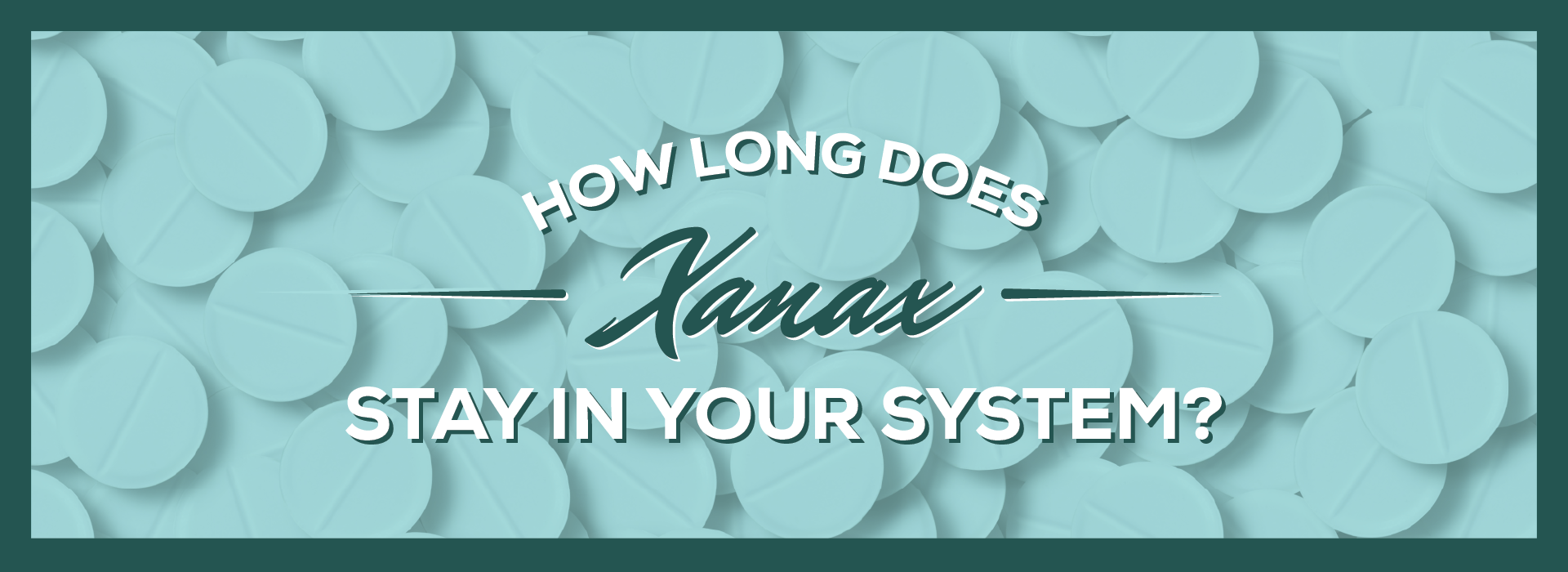
If you realize that you’ve been abusing Xanax, you, hopefully, are looking to get sober. The minute that the Xanax leaves your system, you might start to experience withdrawal symptoms. Before you try to get sober, you must fully understand how this drug works. More importantly, you should also try to figure out how long Xanax stay in your system, and what you can expect when you stop using.
This medication is also known as alprazolam.
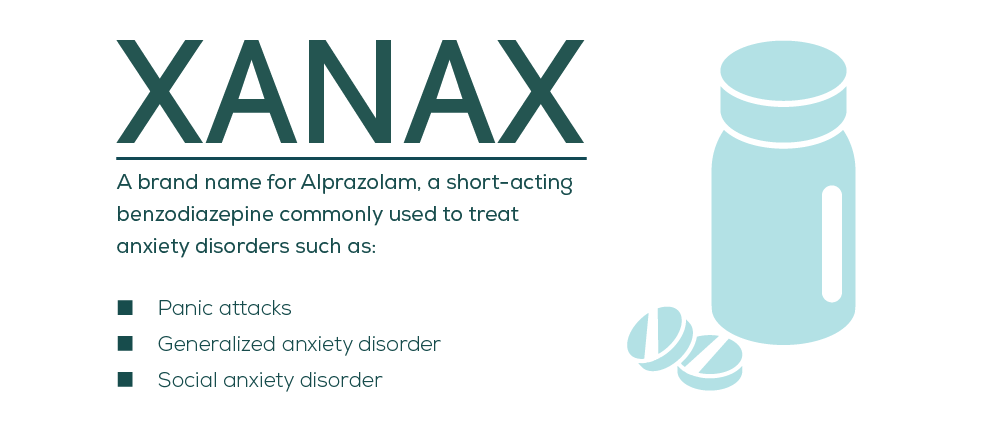
There are many uses for Xanax. It can be used for migraine relief, for pain relief and to treat nausea that comes with cancer and chemotherapy. This prescription medication may also be used to treat post-traumatic stress disorders, among many other conditions. Some rehab facilities prescribe this drug to those who are detoxing from alcohol to help reduce anxiety.
Some people are more likely to become addicted to this medication even if they follow their doctor’s instructions. However, other patients may increase the amount that they take without the doctor’s approval. This is a medication that the body can develop a tolerance to. A higher tolerance can lead to addiction because the patients must take more to reduce their anxiety.
When you hear these terms, you know someone who is possibly using this drug without a prescription. If you’re concerned about an addiction troubling a loved one, this may be a warning sign.
Xanax is also known as alprazolam. The active ingredient is alprazolam, and the tablets are branded as Xanax. Alprazolam is a triazolo analog of the 1,4 benzodiazepine class of active compounds. This basically means that it has an extra C2H3N2 attached to the top. That’s basically the pentagon at the top.
The lower part of the chemical structure is standard for all benzodiazepines. They all basically have the same structure, which is what allows them all to have the same effects on the central nervous system (CNS).
The chemical name of alprazolam is 8-chloro-1-methyl-6-phenyl-4H-s-triazolo [4,3-α] [1,4] benzodiazepine, and the molecular formula is C17H3ClN4.
This chemical comes in the form of a white crystalline powder. It is not soluble in water, but is soluble in methanol and ethanol.
Xanax comes in two different types. There’s an immediate-release version and an extended-release version. All forms of Xanax are labelled as Schedule IV Controlled Substances. They come with a potential for abuse, and must be used carefully and with caution.
Xanax comes in four different forms. The form of Xanax, as well as the dose of alprazolam contained within each form is listed in the table below:
The extended-release version of Xanax will stay in your body for much longer, and will take longer to clear. Xanax XR tablets will usually stay in your system for at least 5 to 11 hours. The mean plasma half-life of this medication is about 11.2 hours. The effects of Xanax may be felt for around 6.3 to 26.9 hours, and the drug will take about 6 days to be fully cleared from your system.
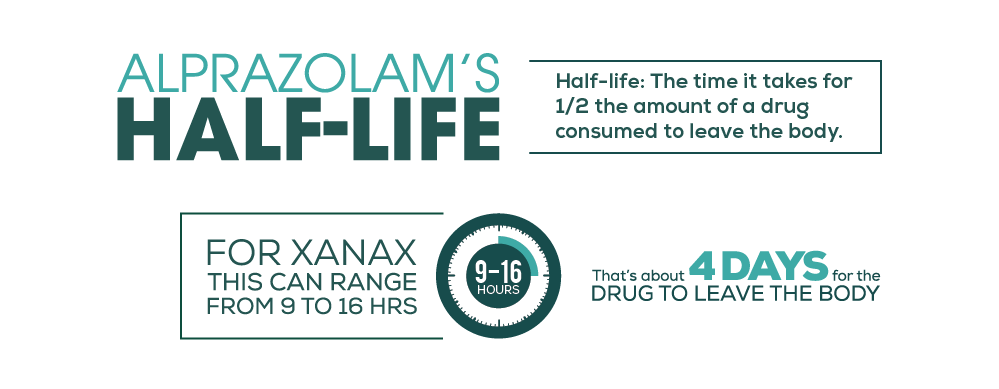
In comparison, the extended-release version can be cleared from your system much more quickly.
Xanax tablets also contain some inactive ingredients. They include the following: lactose, magnesium stearate, hypromellose and colloidal silicon dioxide. Some of the tablets also contain coloring agents like D&C Yellow No. 10 and FD&C Blue No. 2.
Xanax is not recommended for anyone under the age of 18.
This medication is prescribed to treat anxiety disorders, panic disorders, anxiety associated with depression and premenstrual syndrome.
Immediate-release
Extended-release
Dosing modifications must be made for those with renal impairment. There isn’t enough research in this field, so those who decide to take Xanax must do so with extreme caution.
It’s a common misconception that a person can’t get addicted to prescription medication. In fact, it’s possible to become dependent even if you take it as the doctor prescribed. This is especially true if you have a history of addiction. This is one reason why it’s important to tell a doctor about past issues with drug abuse or addiction. They may change their recommendation for prescription medications if they know about your past problems.
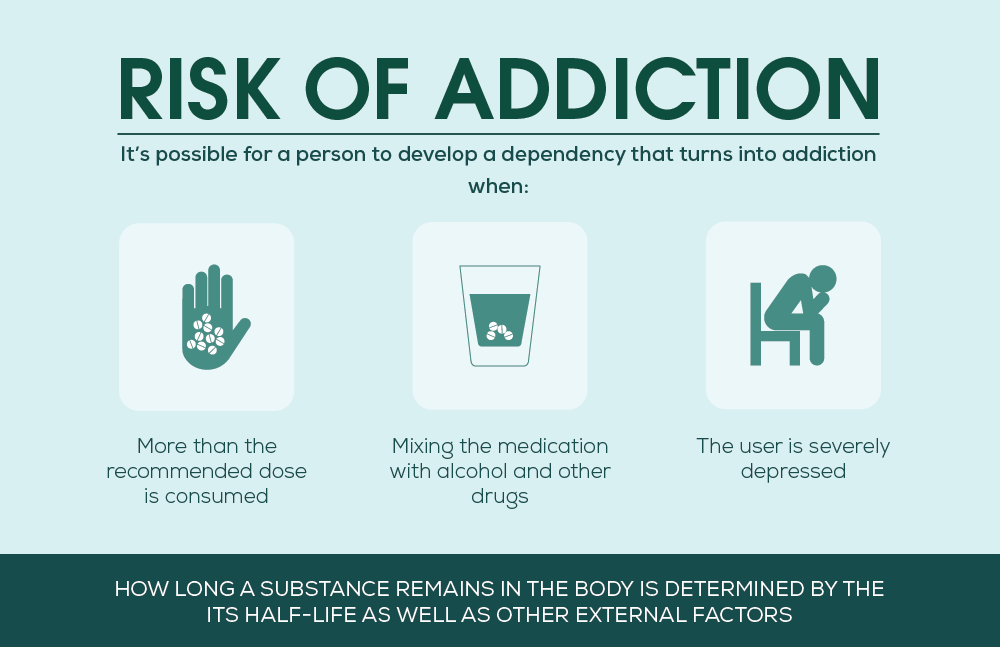
Drug abuse and addiction aren’t the same things, but both can impact your life in a negative way. Even if you only abuse drugs and never become addicted, you can harm your health. Drug abuse can also impact your life negatively in other ways. You should know what abuse is, how it differs from addiction and what the signs of both are if you think you might have a problem or if you suspect that you have a family member with this issue.
When a person abuses a drug like Xanax, they begin taking it differently than how it was prescribed. Someone who is taking Xanax when they don’t have a prescription is also abusing it. They may think they need more to get the results they want or the person may be using it recreationally. Common examples of drug abuse include:
When someone’s abusing a prescription medication, they often think there isn’t any danger in what they’re doing. They may take the prescription drug when they feel that they need it or when they want to experience the euphoric feelings associated with the drug.
Someone who abuses Xanax may start to think about the drug even when they aren’t using it. The person may also begin avoiding places where they can’t use or people who will criticize them for their choice to use. If you show any of these signs of drug abuse, you need to get help before you become an addict.
Someone who is abusing Xanax may not necessarily be addicted to it. The key is that they can stop using it if they wanted to. However, they like the feelings they get from the drug, so they have no desire to stop.
With continued use, the abuse will turn to addiction. The brain will crave the feelings that come from using the drug. The system won’t know how to operate without it. Common signs of an addiction include the presence of withdrawal symptoms. Someone who has become physically or chemically dependent on the drug is also said to be addicted.
Anyone who meets three to four of the 11 criteria struggles with a mild addiction, and anyone who meets more than six criteria struggle with a severe addiction.
Xanax is a powerful drug. It doesn’t take long to develop an addiction. Just a few weeks on this medication can cause a person to develop a dependence on it. Once a person becomes dependent on this drug, he or she will need professional help to get sober.
Xanax is mainly metabolized by either the liver or the kidney. How efficient a person’s liver or kidney may be will also determine how quickly Xanax is metabolized. Some people are rapid metabolizers, and others are poor metabolizers.
After Xanax has entered the system, it will slowly be metabolized by the liver. In particular, the liver enzyme CYP3A4 will do most of the metabolizing. Alprazolam is then broken down into major metabolites: 4-hydroxyalprazolam and α-hydroxyalprazolam. Both of these metabolites are produced in very low concentrations. They also have a very low potency. As a result, they don’t contribute to the effects of Xanax.
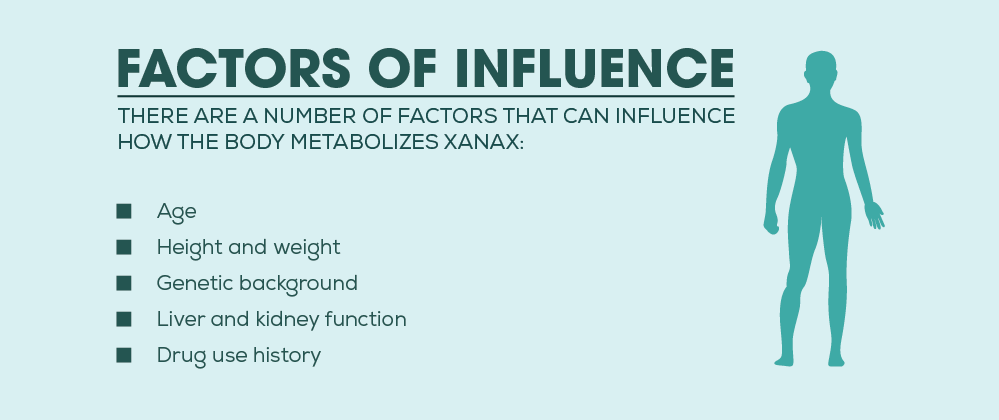
The metabolites and any remaining alprazolam will then be filtered out by the kidneys and removed from the system in urine. Some studies suggest that impaired renal function will slow down the rate of which Xanax is removed from your body.
An interesting concept to wrap your head around is fat solubility. Some drugs are soluble in fat, which means that they can enter your fat cells and stay there for some period. Xanax, and all other benzodiazepines, are fat-soluble to some extent. Some other drugs, like marijuana, are extremely fat soluble. Fat solubility is the reason why drugs like marijuana can stay in your system for weeks at a time.
Xanax can be stored in fat cells. Someone with a higher body fat percentage will store more Xanax in their fat cells. The Xanax chemicals will slowly be released. This means that Xanax can show up on your drug test for a longer amount of time.
To prevent the body from storing Xanax in fat cells, most doctors will prescribe small doses. This way, it’s less likely that Xanax will accumulate within your body.
In the event that too much Xanax accumulates in your fat cells, you could develop symptoms of over-sedation. Common symptoms of over-sedation include confusion and speech impediment. These effects are due to a buildup of Xanax. In extreme cases, over-sedation can also lead to an overdose. The affected individual will experience symptoms like shallow breathing and low blood pressure.
This is a drug that is frequently prescribed to those who suffer from anxiety and panic attacks. It should only be taken for a short period of time. It should also only be prescribed on an as-needed basis. Unfortunately, abuse happens often. This usually results in an addiction.
If you’re wondering how long does Alprazolam stay in your system, the answer is not that simple. The length of time that Xanax will stay in your body will depend on many factors. It will also depend on the “half-life’ of the drug.
A half-life is the amount of time it takes for half the drug to leave the body. For Xanax, this can range between 9 and 16 hours. After that, another half of the remaining amount will be cleared from the body. This means that for most people, it can take around four to six days for alprazolam to be completely gone.
When it comes to drug use, many people are also worried about the half-life of the metabolites. This is because some metabolites may have an effect on the body. This happens with opioids. With that said, the metabolites of Xanax are not potent enough to cause a reaction. Due to this reason, it doesn’t really matter what their half-life is.
The information provided above is just an estimate. It can take a person a longer amount of time and a shorter amount of time to clear Xanax from his or her body. There are a number of factors that influence how long Xanax remains in the body. Some of these factors include:
While these factors can give you an idea of how long Xanax will stay in your system, it’s important to note that the clearance rate still varies by person. You can expect your body to follow this approximate timeline, but there is still room for discrepancies.
Many drugs have been glorified by pop culture. Celebrity drug addiction struggles are always publicized by the media. Other celebrities, like rappers and singers, own their drug use and will even rap or sing about them. This may mislead some teenagers and young adults on the dangers of drug use. In fact, hearing about drug use all the time on the radio may even encourage them to try these drugs out.
Xanax is another drug that has been popularized by pop culture . We hear all the time how certain celebrities rely on this drug in order to get a good night’s rest. Some celebrities may even make it seem as if taking Xanax is a normal thing.
Below, we’ll take a look at some of the biggest names that have abused Xanax in the past.
Demi Lovato’s struggle with drug addiction has been publicized by many media outlets. When the public first learned about her drug addiction, it was shocking. No one expected the bubbly Disney star to have a problem with drugs.
Lovato has since sought out addiction treatment and is now sober. She has abused many different types of drugs, most notably heroin. With that said, she is not shy about how she abused many substances at once. She has spoken out more than once on the dangers of drug abuse, and how she believed that she had come close to overdosing many times. Amazingly, Lovato has turned her life around. Upon seeking rehab, she has managed to stay sober for her loved ones.
Another notable star that went out in flames is Lil Peep. Many rappers have glorified drug use in their songs. The same can be said for Lil peep. This New-York born, 21-year-old rapper died from a suspected overdose. He had posted himself taking magic mushrooms, a super-concentrated version of marijuana and pills on his Instagram page leading to his death. He was also filmed taking Xanax bars.
Lil Peep was never quiet about his drug use. In fact, he mentions drugs in many of his songs. In particular, you’ll find a reference to Xanax use in his song Praying to the Sky:
I hear voices in my head, they tellin’ me to call it quits
I found some Xanax in my bed, I took that shit, went back to sleep
Back in 2013, Miley Cyrus was going through some difficult times. Not only was her relationship in shambles, but her career was causing her a significant amount of stress. She once posted and deleted a tweet referencing her Xanax use. This tweet had garnered a lot of attention and concern. It showed the public the tremendous stress that many celebrities were in. They not only had crazy work hours, but they were also thrust into the spotlight.
While Cyrus’ tweet of her Xanax use may not necessarily indicate abuse, she then had a downward spiral.
John Mayer has claimed that he always has Xanax in his pockets to help him deal with anxiety. While this may not necessarily indicate abuse, it does show that he is somewhat dependent on this drug. He cannot function without it, and he relies on it constantly to help him deal with his struggles in life.
“you can create dark neighborhoods in your mind as easily as you can create rural wonderlands. And the day I realized that was one of the worst days of my life. It sent me on quite a spin. I went on a bender. An anxiety bender.”
It’s clear that John Mayer may depend too much on Xanax. If you feel like you are growing dependent on this medication, you should highly consider seeking help from a drug rehab center. Xanax is meant to aid you through episodes of panic and anxiety. You are not meant to rely on it for the rest of your life.
When Jonathan Davis learnt that his baby had diabetes, his life spiraled out of control. Not only was he stressed out about his baby, but he also had a huge performance coming up. The stress was simply too much for him to handle, and he started taking Xanax to help him deal with his stress and anxiety levels. They helped him feel good at the moment, so he kept taking them.
Unfortunately, Xanax is incredibly addictive even if it is prescribed by a doctor. It wasn’t long before his use turned to abuse and then to addiction. At one point in time, he started going through benzodiazepine withdrawals.
"stopped writing and listening to music and a lot of stuff that I love because I was really battling with this detox off of benzo's. It's a horrible drug; they call it Xanax at home, I don't know what it's called here [U.K.]. I was fighting having seizures, I was shaking all the time, I couldn't think. My brain, actually, was wired a certain way from the medicine so it had to rewire itself. I had one foot in reality and one foot out."
He would take a piece in the morning and another piece at night. After taking Xanax for two years, Davis tried to recover from his Xanax addiction. He was successful although it did take him a while.
Many people are interested in understanding how long it takes for their body to clear Xanax because they may have to take a drug test. The drug tests may be for their place of employment. Or, these tests may be given to them by a family member who just wants to confirm that they are sober.
There are many different types of drug tests that can detect Xanax use. Knowing what’s available can also help you determine which drug test to choose if you suspect a family member or friend with abusing this prescription drug.
In this section, we’ll take a look at the different drug tests that are available in detail. Each test will have a different detection window, and will also employ a different method to analyze the results. If you’re trying to check up on a family member, you may want to look for a test that not only produces instantaneous results, but is also non-invasive.
Blood tests are often used by doctor's offices, clinics and hospitals to check Xanax levels. These tests are invasive, but often necessary.
The drug can be detected in your bloodstream within just a few hours after the last dose. If a positive test results, it will remain for up to 24 hours. Because of this short detection window, a urine test might be a better choice for at-home testing.
Blood drug tests are very popular still because they’re very accurate. This type of drug test is virtually impossible to beat. You can’t take an adulterant to smudge the results nor can you use someone else’s blood, as the blood is drawn in-person by a professional.
With that said, blood tests are also the most expensive type of drug tests around. A medical professional and specialized equipment are needed. Also, the sample can take up to a week to be analyzed. As a result, you cannot get instantaneous results.
Urine tests are the most common ways to look for drugs in the body. At a very low dose, users may test positive for as long as four days. For those who use high doses or who use the drug frequently, this window stretches to about a week.
This type of drug test is very popular because it’s quick, non-invasive and painless. There are two different types of urine drug tests: an immunoassay and a gas chromatography/mass spectrometry (GC/MS). An immunoassay can, at times, give false positives, but they’re cheaper than a GC/MS. The GC/MS is more accurate, but it’s also a tad more expensive. It’s important to note that both tests can also fail to detect same-day drug use.
Urine tests are easy to do. All you need to do is give a specimen in a cup. The process is simple and easy. In some cases, a same-gendered nurse or technician may follow you into the washroom. This is to prevent anyone from messing with the sample. Some urine tests offer instantaneous results; these at-home kits do not rely on immunoassays or GC/MS.
Police stations may use saliva tests to check for drugs in the system. These tests are invasive, but not as much so as blood tests. Saliva tests are actually quite accurate. However, the detection window isn't quite as long as it is for a urine test.
Alprazolam can be found in saliva within a few hours after the last dose. A positive test will be detected for about two and a half days.
Saliva tests are also rather popular because they’re painless and non-invasive. These tests are also relatively inexpensive in comparison to other alternatives that are available.
Sometimes it is necessary to check for a longer history of drug use. When this type of testing is needed, hair samples can be used.
It can take a few weeks before Xanax can be found in human hair. This is because it takes a while for hair to grow. Once sufficient growth is there, a positive test will remain for around a month. Most tests take hair from your head for testing, but hair from the body can be used if you’re bald. It will have a different timeline though because hair on the body grows at a faster rate than on the scalp.
Hair drug tests require about 1.5 inches of hair that’s closest from the scalp. You’ll need anywhere from 50 to 200 strands of hair to get an accurate analysis. Every 0.5 inches of hair will give you an analysis of the past 30 days or so. So, 1.5 inches of hair should give you some insight on the past 90 days. If you can collect more hair, you may have a longer window of detection.
This type of drug test isn't done very often. This is because it's usually necessary to screen for more recent use. While these tests will tell you if Xanax is present in the system, it may not tell you if the person is abusing the drug or is taking it as prescribed if he or she has a prescription.
It’s highly dangerous to take Xanax with other drugs or alcohol. The risk of fatality increases dramatically when combining two or more drugs. So does the risk of an overdose.
Xanax depresses the central nervous system, which allows you to relax and not be anxious. When you take it with another substance that does the same thing, you run the risk of stopping essential functions of the body.
You may experience extreme drowsiness, weakness and fatigue, which puts you at a higher risk for an accident or injury. Some of the most common drugs taken with Xanax besides alcohol include barbiturates, prescription opioids like OxyContin or Vicodin, heroin, methadone or hypnotic drugs like Ambien.
When combining these drugs, you may begin having difficulty breathing and may become unconscious. You’re at a greater risk of death in these situations as well. Because you aren’t as mentally alert, you may have trouble recognizing that you need medical attention.
If you mix prescription drugs, it may also affect the body’s clearance rate of Xanax. Basically, Xanax will take longer to be removed from your body if you take:
The drugs above could cause Xanax to start accumulating in your body. This can lead to some serious complications and health problems. Those who are taking the drugs listed above must let their doctor know. Only a doctor can determine whether it’s a good idea to stick with Xanax or whether the patient should switch to another drug.
You should be aware of the side effects of Xanax whether you’re taking it as a prescribed drug or for recreational use.

It may also cause fluttering in your chest, confusion, uncontrolled movements and depression and suicide. It’s important to get help immediately if you notice any of these symptoms. It may be an indication that this drug is not suitable for you.
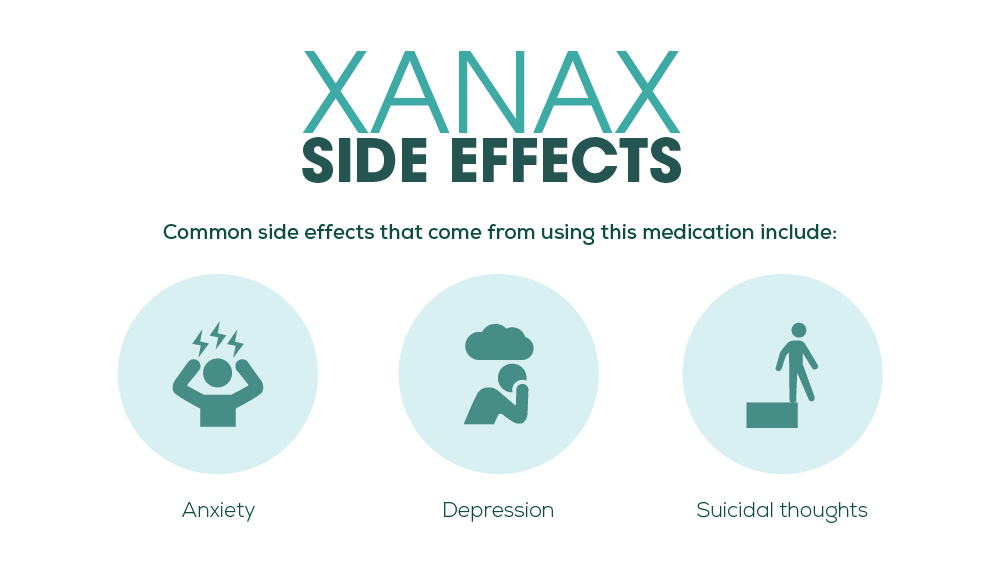
Those who are going to discontinue Xanax use because of the side effects will need to do so slowly. They will need to follow a taper schedule. This schedule will vary from one patient to another. It all depends on what each patient needs, and how their body responds to the absence of the drug.
Allergic reactions to Xanax are not uncommon. In comparison to other benzodiazepines, Xanax is a lot more toxic. Due to this reason, it’s much more likely that drug user may develop an allergic reaction from taking this prescription medication. You need to get immediate medical help and attention if any of the following symptoms of an allergic reaction are present:
An allergic reaction can turn fatal at any moment. You never know when the symptoms may worsen.
So, how does Xanax work? How does it affect your body and brain? Take a look at the video below for more information on how Xanax works in your brain. This drug is a central nervous system depressant, which means that it works by relaxing your body and mind. It inhibits excitatory neurons, so that your body can rest.
Xanax can have an effect on your brain, nervous system, respiratory system and cardiac system. It basically quiets everything down.
How does Xanax accomplish this? Easy, it attaches to and interacts with GABA neurotransmitters. They attach to GABA receptors in the brain, and cause the brain to release more GABA neurotransmitters.
GABA is a naturally-occurring chemical that is produced in the brain. It’s basically a messenger. When there’s a lot of GABA around, GABA will go around and attach to other parts of the brain to calm it down. This chemical is essential to the brain. It is normally used to calm nerves that are firing excessively. When your nerves are overactive, you may get feelings of panic or anxiety.
GABA doesn’t only quiet down and tire out the nerves. It will also have an effect on a whole host of other organs and body parts as well. For example, it can help calm down your muscles, so that you feel more relaxed and drowsy. This is why Xanax can be very helpful in treating insomnia.
Someone who doesn’t have anxiety and takes Xanax will feel like they’re going into a state of deep relaxation. This is because their neurons aren’t even overactive to begin with. It’s essentially like putting them to sleep.
It’s possible to take too much of this drug, which can result in an overdose. As your body becomes tolerant of the drug, it may require more for you to get the same results. The amount it takes to overdose may not be much more than what it takes to get the desired results. This is one reason it’s dangerous to increase the amount you’re taking without a doctor’s approval. This remains true even if you’re using it for a medical condition.
Overdosing can be fatal. Immediate medical attention is necessary if you overdose. Benzodiazepine overdose rates have been skyrocketing. A lot of people are accidentally overdosing on Xanax without intending to.
Knowing what to expect will allow you to take quick action in the event of an overdose.
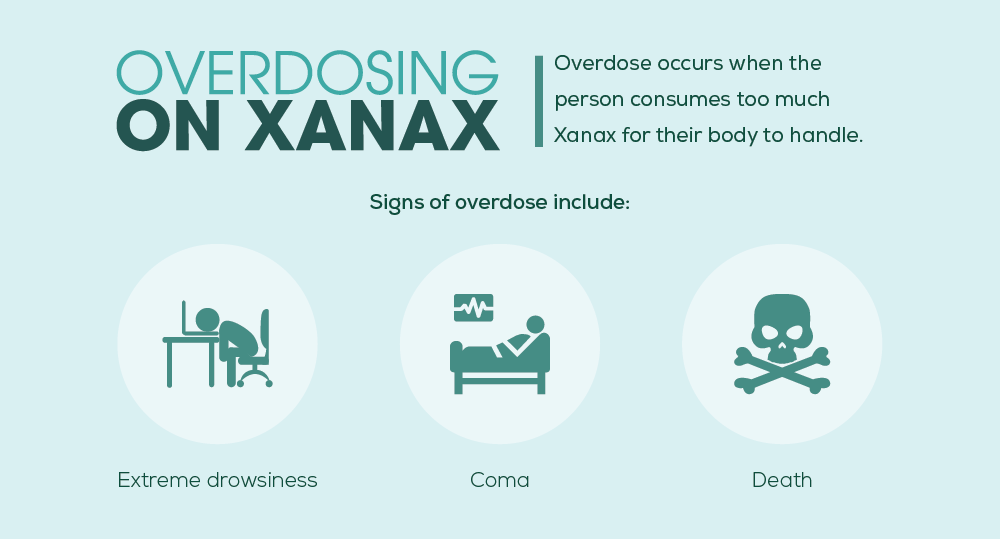
Signs of an overdose include the following:
Those who overdose on Xanax will need immediate medical attention. It’s crucial that they get immediate medical help and attention. Quick action may end up saving their lives or it may end up preventing permanent bodily damage. Due to this reason, it’s vital that those around a Xanax user know what to look for and what to expect.
It’s important to note that those who overdose on Xanax should get help immediately. The moment that you overdose, it means that you’ll be even more likely to overdose in the future.
Some people are more likely to overdose on Xanax than others. It’s vital that these people realize that they have an increased risk of overdose. People who are more likely to overdose on this prescription drug will:
Studies show that 1 in 5 people who overdose on Xanax accidentally are doing so because they mix Xanax with a strong prescription opioid, like oxycodone. These people may also abuse alcohol at the same time. Both of these substances are also central nervous system depressants. When they are mixed with Xanax, they increase a person’s chance of respiratory depression and failure. Essentially, their brain will forget to tell their body to breathe.
Another important note to consider is that those with a co-occurring mental health disorder may be more willing to take risks. They may be more willing to increase their dosage or mix Xanax in order to self-medicate. These patients require dual diagnosis treatment in order to recover from the addiction and in order to treat their mental health issues.
When faced with a Xanax overdose, you’ll need to act quickly. The very first thing that you should do is call 9-1-1. The longer that you wait, the more danger the overdose victim will be in.
Upon calling 9-1-1, you’ll need to give the operator the following information:
While you wait for the emergency responders to arrive, gather the prescription bottles and the overdose victim’s insurance information or medical card. The emergency responders may need this type of information later.
It’s also important to watch the overdose victim’s breathing. The last thing that you want is for them to stop breathing. If this does end up happening, you’re going to need to perform CPR immediately. Check out the video below for instructions on how to do so:
Perform CPR until the emergency responders arrive. At which point, the emergency responders will take over and take the overdose victim to the hospital.
At this current moment, there is only one antidote for a Xanax overdose. This drug can reverse any depressive effects that Xanax has on the central nervous system (CNS). It’s called Flumazenil.
Unfortunately, this drug comes with a lot of risks. As a result, most doctors will need to carefully consider the pros and the cons before administering this drug. Flumazenil can place the overdose victim in an immediate state of acute sedative withdrawal. This condition comes with some pretty serious symptoms, like life-threatening seizure activity. It’s also important to note that Flumazenil may not always work. It’s not a failsafe antidote, like naloxone for prescription opioids.
In some instances, a dose of activated charcoal may also be administered. The activated charcoal will help prevent respiratory depression and vomiting. It will keep the overdose victim’s airway clear.
In most cases, patients will be discharged from the hospital if they don’t show any other symptoms for at least 6 hours to half a day. Some patients may choose to get discharged into the care of a drug rehab center. An overdose should be a pretty strong hint that the overdose victim needs help.
When people think about detox, they may automatically picture someone with an alcohol or illicit drug addiction. However, you may need to detox for prescription medications as well if you’ve become addicted.
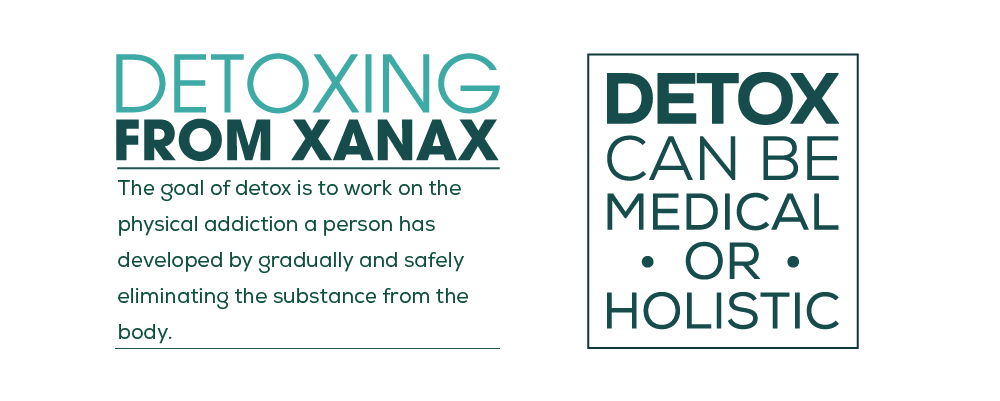
To understand the need for detox, you need to first understand how the drug affects your system. When you take these drugs, they impact the chemicals in your brain. These chemicals make you feel good or they may inhibit unpleasant feelings like anxiety. Your brain begins to depend on them to feel good. Once the drug is out of your system, your brain sends a signal that it wants more.
If you stop taking the drug on your own, you may experience severe withdrawal symptoms. They could cause you to relapse and start using again or suffer other medical complications. If you relapse, don’t give up. Pick yourself up and try again.
People who have been prescribed Xanax to treat anxiety or insomnia can expect their symptoms to return in higher intensity. As you can see, it’s not easy to stop taking this drug on your own. In fact, most addiction experts do not recommend it at all. They would recommend withdrawing at a detox center. There, you’ll have all of the tools needed to tackle this process head on.
The withdrawal timeline will vary from one drug to another. It will also vary a bit from one person to another, as the withdrawal process will also depend on a person’s biological makeup, as well as how quickly they are able to remove the drugs from their system.
In most cases, withdrawals will usually start a few hours after the last dose of Xanax. This is usually when the body will start to clear Xanax from their system. It’s important to note that not everyone will follow the timeline below exactly. There may be some discrepancies.
With that said, the approximate Xanax withdrawal timeline is as follow:
By the end of the month, most physical withdrawal symptoms will have completely disappeared. The only thing that patients need to worry about is psychological withdrawal symptoms. To tackle these symptoms, patients will need a solid relapse prevention plan.
It’s not unusual for the psychological withdrawal symptoms to disappear temporarily and reappear within several months or years. These symptoms will continue to wreak havoc on a recovering drug addict’s life for years to come. This is why so many recovering drug abusers relapse seemingly out of nowhere years down the line.
When you go to a drug detox facility, you have two options for detoxing: medical detox and holistic detox.
You may need medical detox to help you get through the worst of the symptoms. With this method, you’re given medications which help reduce the withdrawal symptoms until your body readjusts to life without the drug.
This type of detox is helpful for many people, and it often takes away the fear of getting clean. However, these medications often carry a risk of addiction which means prolonged treatment.
The other method of detoxing is holistic detox. With this option, the focus is on improving a person’s nutrition and getting him or her to exercise more. This will help the body to get rid of the drug naturally. Getting the right nutrients can help the body fight the symptoms of withdrawal on its own. When you exercise, you release endorphins which help you feel better and may mimic the effects of the drug, so you don’t crave it. This method is gaining popularity because it’s natural and safer than other options.
Another common misconception for people who are addicted to prescription medications is that they don’t need to go to rehab. They may think of drug rehab as a place for people who are addicted to alcohol or heroin. However, this is untrue. Someone who is addicted to Xanax will need just as much help.
Even though you may feel good after detoxing from Xanax, it doesn’t mean you don’t need treatment. You still need to address your addiction, to learn what caused it and to learn how to avoid getting into the same situation in the future.
If you are addicted to Xanax, you have a lot of treatment options to choose from. Most drug rehab centers will separate and categorize the various treatment options into three categories. The main difference lies in their level of care. Some patients may prefer options that offer a lot of flexibility, while others may need a lot of medical supervision.
The three main types of addiction treatment available include intensive outpatient programs (IOPs), outpatient programs and inpatient programs. Let’s take a look at the differences below.
Intensive outpatient programs (IOPs) have become very popular in recent years. They provide a higher level of care without requiring an inpatient stay. Many people appreciate this type of flexibility. It allows them to incorporate drug rehab into their daily lives.
This might be something that you would like to consider. One of the features of this type of program is it gives you more support and therapy than with standard outpatient programs. You spend several hours at a time in treatment, sometimes even all day, before returning home at night.
Others may find that a traditional outpatient program is enough for them. They attend therapy a few times a week until they have completed the treatment plan. This option is best for someone who only abuses drugs or has a mild addiction.
No matter which type of outpatient program you select, you need a strong support network at home. Otherwise, you may find an inpatient drug treatment program to be the best option.
Inpatient rehab provides a place for you to stay while you receive treatment. You will go through therapy for up to 30 days before you return home. This option is best for anyone who doesn’t have a support system or those who want to get away from temptation while they begin recovery. This is also an ideal treatment option for those who struggle with a moderate to serious addiction. These individuals may be more likely to experience dangerous withdrawal symptoms. They need constant medical supervision and help in order to get their lives back on the right track.
Residential rehab is a longer form of inpatient treatment. The person may stay at the facility for several months while they go through a treatment plan. The program is best for those who have been through therapy before and have relapsed or those who have spent years as an addict.
There is no timeline for how long it will take you to go through initial treatment. Every person progresses at their own rate and by taking small steps to reach their goals. It’s important to think about your situation to determine which type of program is right for you.
If you’re unsure of what may work best for you, speak with one of our addiction experts. We can walk you through the pros and cons of each level of care to help you determine what will work best for your situation.
You probably may have some idea about the kind of therapy you’ll receive in drug rehab. However, it’s important that you have the correct information to dispel any myths you may have.
First, you should expect to go through an assessment which will tell the therapist what kind of treatment plan is best for you. They will also determine if you have co-occurring disorders, which is often the case with a Xanax addiction.
A co-occurring disorder means you have a mental health problem and an addiction. Xanax is often used to treat severe anxiety and other mental health conditions. A person may begin taking it as prescribed and notice an improvement in their symptoms. When the body develops a tolerance for the drug, they may see the symptoms of their condition return. Because they want to get rid of these symptoms, the person increases the dosage or takes it more frequently.
With a co-occurring disorder, it’s important to treat both conditions in therapy. Otherwise, you’re setting yourself up for relapse when your mental health condition shows symptoms that you cannot bear. You’ll need to attend therapy to learn how to manage your mental health condition and your addiction. You may also need a different medication prescribed to help reduce or eliminate your symptoms.
Most rehab centers include group therapy in their treatment plans. It’s important to have a support system to help you get through recovery and to maintain sobriety after treatment. Group therapy enables you to meet others who are in similar situations. They can offer support and tips on how to deal with specific situations. Sometimes, just knowing someone understands what you’re going through can help you feel not so alone.
Many treatment centers offer alternative therapy. This includes programs such as music or art therapy, yoga, journaling and equine therapy. This type of program is especially beneficial for people who suffer from co-occurring disorders because they may need to learn positive ways to handle their anxiety or other symptoms. Instead of turning to drugs, they turn to drawing, painting, playing music or yoga to help them get through stressful times.
Behavioral therapy, like Cognitive Behavioral Therapy (CBT) and Dialectical Behavioral Therapy (DBT), can also help patients learn how to manage their cravings. These therapies can also dive down into the underlying reasons behind the addiction. For example, some patients may be dealing with a traumatic event. In this case, Eye Movement Desensitization and Reprocessing (EMDR) may help them move forward with their life.
More rehab centers are taking a holistic approach to treating addiction. It’s also a method for treating mental health disorders and their symptoms. In this type of program, the person focuses on improving nutrition and getting regular exercise. They may be lacking nutrients. This may have caused their body to respond in negative ways.
Exercise is essential to the program as well because it helps the person deal with stress and to feel better. When you work out, you often feel good afterwards because of the endorphins that were released. You may feel more confident and positive, which are the same effects you experience with addictive drugs.
Most treatment plans will consist of different methods of treatment to help you reach your goals. They won’t be the same for every person because each person responds to therapy in a different way..

You should take the time to do some research on the best treatment programs for your addiction. Look for a center that treats prescription medication addiction. Consider whether you need inpatient or outpatient care and whether an IOP is the best choice to help you get your life back.
You’ll want to compare therapy options at the treatment centers, so you know what to expect when you apply. Look for a center with a solid reputation for treating addiction. If you’re interested in getting treated by us, you should take a tour of the facility and ask any questions you have about our programs.
Thanks to changes in the healthcare system, health insurance is required to pay for drug addiction treatment. This means that people can afford to go for treatment even if they don’t have the money to pay out-of-pocket. In the past, only those who were wealthy or well-off could seek treatment for a drug addiction. Now, anyone who needs help can get the assistance they need for recovery.
Here at Northpoint Seattle, we want you to win your battle with drug addiction. We provide the tools you need to succeed. Our state-of-the-art facility provides a program that is similar to what you would get at an inpatient center, but with more flexibility. You can continue to work a job, go to school or care for your family while getting the treatment you need to move forward with your life.
We create tailored treatment plans for every individual so you know you’re getting the best care possible. Northpoint Seattle takes a holistic approach to drug treatment, so you can feel healthy and ready to face life again upon completing your treatment plan.
When you contact us, we can review your information and verify your insurance so you can focus on the most important task, which is starting your recovery. If you feel like you need help with a drug addiction, contact us today.

Our admissions coordinators are here to help you get started with treatment the right way. They'll verify your health insurance, help set up travel arrangements, and make sure your transition into treatment is smooth and hassle-free.
[DirectNumber] Contact Us